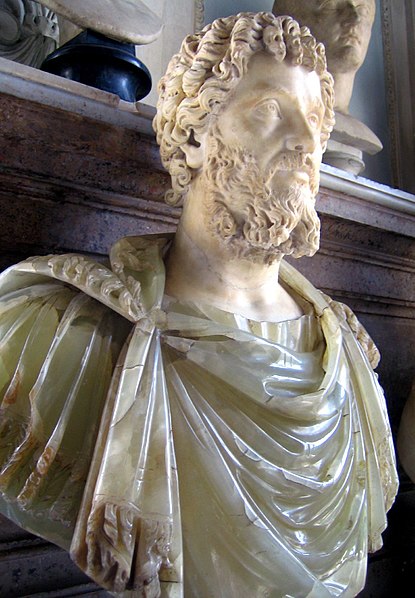Nottingham alabaster is a term used to refer to the English sculpture industry, mostly of relatively small religious carvings, which flourished from the fourteenth century until the early sixteenth century. Alabaster carvers were at work in London, York and Burton-on-Trent, and many probably worked very close to the rural mines, but the largest concentration was around Nottingham. This has led to all the English medieval output being referred to as "Nottingham alabaster".
Resurrection of Christ, panel from an altarpiece set, 1450–90, with remains of the paint
Fifteenth-century altarpiece set, with contemporary frame and well-preserved paint
Nativity panel, ca 1400, using a composition previously found in French ivories. H. 37.5 cm (14 3⁄4 in.), W. 26 cm (10 in.), D. 4.5 cm (1 3⁄4 in.)
Monument to Edmund Brudenell, d.1590. After the English Reformation tomb monuments were the mainstay of the industry.
Alabaster is a mineral and a soft rock used for carvings and as a source of plaster powder. Archaeologists, geologists, and the stone industry have different definitions and usages for the word alabaster. In archaeology, the term alabaster is a category of objects and artefacts made from the varieties of two different minerals: (i) the fine-grained, massive type of gypsum, and (ii) the fine-grained, banded type of calcite.
Calcite alabaster: The tomb of Tutankhamun (d. 1323 BC) contained a practical objet d’art, a cosmetics jar made of Egyptian alabaster, which features a lid surmounted by a lioness (goddess Bast).
Alabaster artefact: A composite bust of the Emperor Septimius Severus; the head is marble and the bust is alabaster.
Alabaster windows in the Church of Santa Maria la Mayor of Morella, Spain (built 13th-16th centuries)
Alabaster workshop in Volterra, Italy








